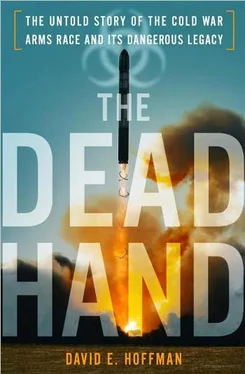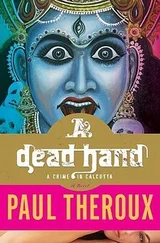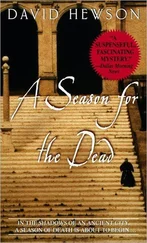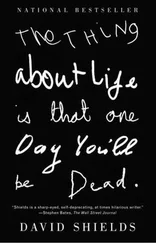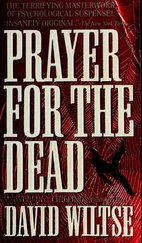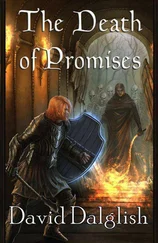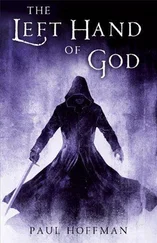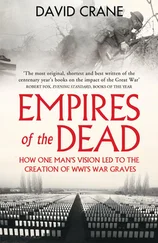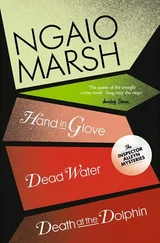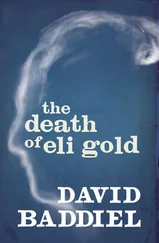In the 1970s, the United States began to deploy a Minuteman III missile that could carry up to three warheads instead of just one. The new device was called a Multiple Independently-targetable Re-Entry Vehicle, or MIRV, and it would allow each of the three warheads to aim at separate targets, leading to a new surge in the size of the arsenals. The Soviets matched and surpassed this technology, and in the mid-1970s began the deployment of a new generation of land-based missiles. One of them, the SS-18, could carry a payload seven to eight times as large as the American missile. In fact, there were plans at one point to put as many as thirty-eight warheads atop each giant SS-18.
As the arsenals grew, so did the complexity of the U.S. war plan. On January 27, 1969, a week after taking office, President Richard Nixon went to the Pentagon for a briefing on the Single Integrated Operation Plan (SIOP). “It didn’t fill him with enthusiasm,” recalled Henry Kissinger, then Nixon’s national security adviser and later secretary of state. In the event of nuclear war, Nixon was told, he would have three functional tasks: Alpha, for strikes on the most urgent military targets; Bravo, for secondary military targets; and Charlie, for industrial and urban targets. If the president ordered an attack of Alpha and Bravo, urban areas would be spared. All three would mean total war. But the choices Nixon would face in an emergency were mind-numbingly complex. There were five attack options constructed from the three main tasks, and as many as ninety lesser variations. 13On May 11, 1969, Nixon flew on the National Emergency Airborne Command Post, a Boeing 707 filled with communications gear, and participated in a nuclear war exercise. His chief of staff, H. R. Haldeman, wrote in his diary, “Pretty scary. They went through the whole intelligence and operational briefings—with interruptions, etc. to make it realistic.” Haldeman added that Nixon “asked a lot of questions about our nuclear capability and kill results. Obviously worries about the lightly tossed-about millions of deaths.” 14
The same fears troubled Soviet leaders. In 1972, the General Staff presented to the leadership results of a study of a possible nuclear war after a first strike by the United States. They reported: the military had been reduced to one-thousandth of its strength; 80 million citizens were dead; 85 percent of Soviet industry was in ruins. Brezhnev and Prime Minister Alexei Kosygin were visibly terrified by what they heard, according to Adrian Danilevich, a general who took part. Next, three launches of intercontinental ballistic missiles with dummy warheads were planned. Brezhnev was provided a button in the exercise and he was to push it at the proper moment. Defense Minister Andrei Grechko was standing next to Brezhnev, and Danilevich next to Grechko. “When the time came to push the button,” Danilevich recalled, “Brezhnev was visibly shaken and pale and his hand trembled and he asked Grechko several times for assurances that the action would not have any real world consequences.” Brezhnev turned to Grechko and asked, “‘Are you sure this is just an exercise?’” 15
Recognizing the overwhelming destructive power of nuclear weapons, Nixon decided in 1969 that the United States would renounce biological weapons. In 1972, more than seventy nations, including the Soviet Union and the United States, signed the Biological and Toxin Weapons Convention, a four-page international agreement banning the development and production of biological weapons, and the means of delivering them. The treaty entered into force in 1975. But the Soviet Union promptly betrayed its signature on the treaty. Brezhnev approved a secret plan to covertly expand Soviet germ warfare efforts under the cover of a civilian enterprise. The Soviet program grew and grew into a dark underside of the arms race.
The biological weapons treaty came at the peak of détente, Nixon’s policy to wrap the Soviet Union in a web of new international agreements and understandings that would make the Cold War manageable and less threatening. A centerpiece of détente was the signing of the SALT I agreement in Moscow on May 26, 1972, by Nixon and Brezhnev. The most significant part of this agreement was the Anti-ballistic Missile Treaty, which effectively ended the prospect of an expensive arms race in missile defenses. 16But on offensive arms, the long-range missiles that were growing in size and destructive capacity, the SALT I agreement was basically just a stopgap measure. It froze fixed launchers for land-based and submarine-based missiles on each side, but included no precise numbers of missiles or warheads to be frozen. The core argument for the SALT I treaty and détente was that equal levels of missiles and launchers were not as important as the overall strategic balance, and in that the two sides were roughly equal. If the United States stopped the cycle of building new missiles, the reasoning went, it was likely the Soviets would too. Kissinger said, “And one of the questions which we have to ask ourselves as a country is what in the name of God is strategic superiority? What is the significance of it, politically, militarily, operationally, at these levels of numbers? What do you do with it?” 17
Détente foundered in the late 1970s, in part on fears in the West that the Soviet Union was reaching for strategic superiority. A small band of defense policy conservatives and hawkish strategists in the United States raised alarms about Soviet intentions and actions. Albert Wohlstetter of the University of Chicago published a series of influential articles questioning whether the U.S. intelligence community had underestimated Soviet military spending and weapons modernization. Paul Nitze, who for a generation had been one of the “wise men” of the U.S. government, an arms control negotiator on SALT I and former secretary of the navy, wrote an article in Foreign Affairs in January 1976 that warned the Soviets were not satisfied with parity or essential equivalence in nuclear weapons, but “will continue to pursue a nuclear superiority that is not merely quantitative but designed to produce a theoretical war-winning capability.” 18
These claims—that the Soviet Union was seeking superiority over the United States and preparing to fight and win a nuclear war—could not be proven, but they gained a foothold in the United States at a time of deep uncertainty in the aftermath of the Vietnam War and the Watergate scandal. In 1976, the Central Intelligence Agency carried out an extraordinary competition to examine Soviet intentions. It set up two separate teams to assess the available intelligence, pitting the agency’s own analysts against a team of outsiders. Both teams were given the same raw material. The CIA insiders were Team A, and the outsiders Team B. The outsiders were led by Richard Pipes, professor of history at Harvard, long a fierce critic of Soviet communism; the others on Team B were also drawn from critics of détente who had been warning of a Soviet quest for military superiority. When finished in November, the Team B report on Soviet intentions was unequivocal that Moscow was on a dangerous drive for supremacy, and that the CIA had badly underestimated it. Soviet leaders “think not in terms of nuclear stability, mutual assured destruction or strategic sufficiency, but of an effective nuclear war-fighting capability,” they wrote. 19
On the other side of the exercise, Team A did not share the shrill sense of alarm. They said the Soviets might want to achieve nuclear war-fighting capability and superiority, but that it wasn’t a realistic, practical goal. When completed, the overall yearly intelligence estimate hewed to Team A’s view that the Soviets “cannot be certain about future U.S. behavior or about their own future strategic capabilities relative to those of the U.S.” The State Department’s top intelligence official was even more cautious. Soviet leaders, he said, “do not entertain, as a practical objective in the foreseeable future, the achievement of what could reasonably be characterized as a ‘war winning’ or ‘war survival’ posture.” 20
Читать дальше
